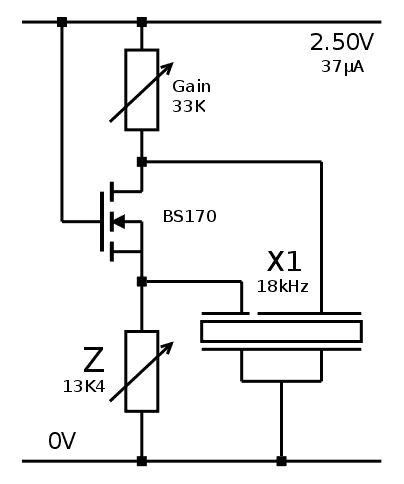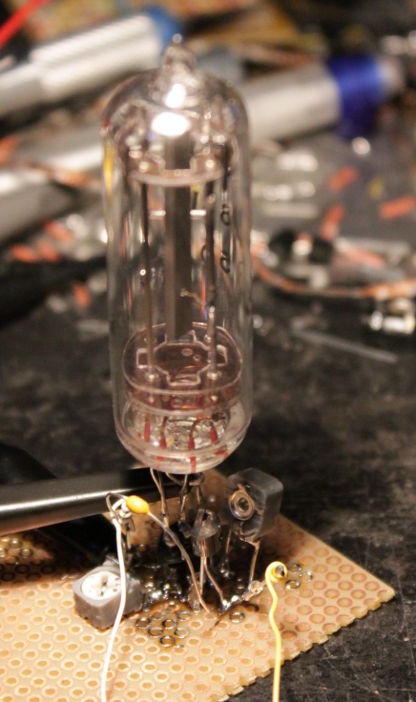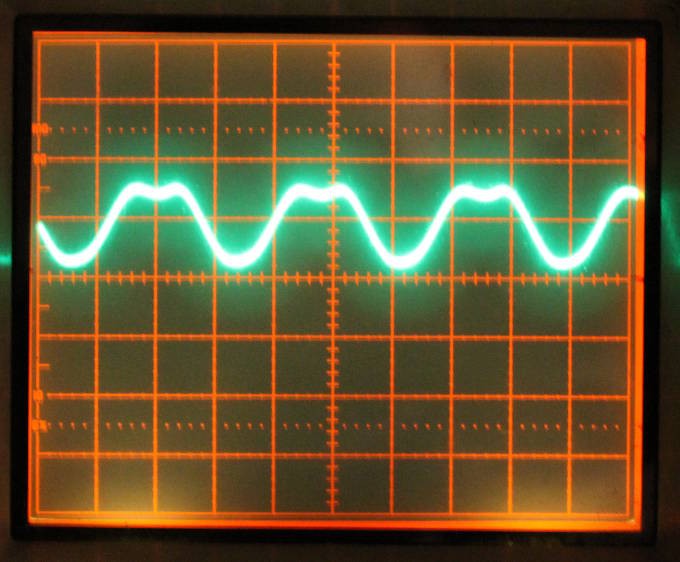My quest is finally over !
I didn't believe it when I wrote Impendance matching for crystal oscillators but I had to try it and it worked !

This circuit fits all my requirements:
- works at low voltage, below 3V, so I can use a micropower voltage regulator
- low power (I just measured it : 37µA only, less than 100µW !)
- minimal parts count : beside the crystal resonator, only a MOSFET and a couple of adjustable resistors (to be changed when voltage is modified)
The downsides are a) slow/lazy startup and b) 3rd harmonics but they are not critical flaws.
(trace: 1V/div)The resistors need some tuning to adjust the waveform amplitude and offset but nothing too hard thanks to a simple 'scope. I don't see how to reduce the 3rd harmonics but I don't care much now.
I wish I knew a better way to start the oscillation than tapping it.
TODO:
- Test with 2N7000
- Tune to exactly 18000.00Hz
- Design a proper output stage/buffer
- Something something
- Profit ?
 Yann Guidon / YGDES
Yann Guidon / YGDES

Discussions
Become a Hackaday.io Member
Create an account to leave a comment. Already have an account? Log In.
Wow - so simple! :)
Are you sure? yes | no
Even I have a hard time to believe it but the 'scope doesn't lie :-)
However for the Germanium case, the dual-stage amplifier is ok for low-gain, slow transistors and i'll stick to it. This is the circuit that made me realise that an oscillator doesn't have to use an inverter, and a non-inverting amplifier also works. So if a non-inverter works, why not loop the common-gate amplifier on itself ?
I'm still trying to get my head around it :-D
Are you sure? yes | no
Congrats!
>I wish I knew a better way to start the oscillation than tapping it.
All you need is an initial pulse of some kind. Some kind of power on R-C circuit on the gate of the MOSFET?
All else failed, use the vibration of a relay or a pager motor on power up. :)
Are you sure? yes | no
Hopefully, nothing mechanical ;-)
The "pulse" could be another MOSFET short-circuiting the Z resistor.
It could be triggered by a astable oscillator that sends short pulses (20µs ?) every hundreds of millisecond, but could be reset when oscillations are detected, further down in the divider circuits.
I have to find 2.5V voltage references as well...
Are you sure? yes | no